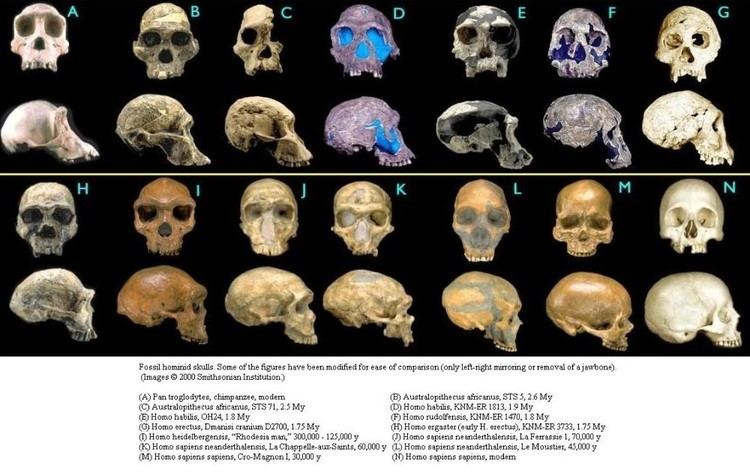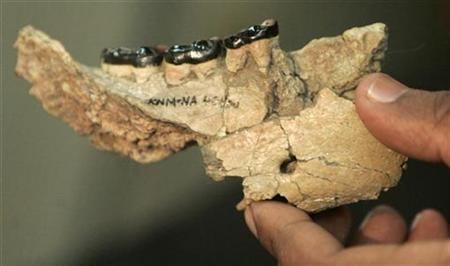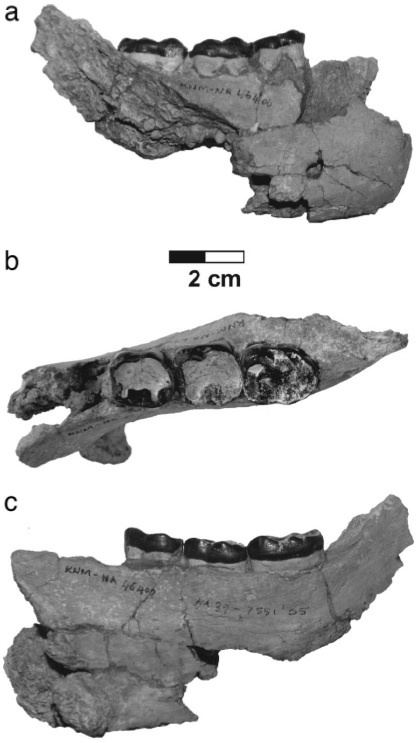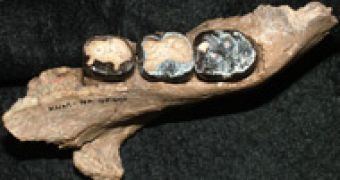Tribe Dryopithecini Phylum Chordata Order Primate | Subfamily Homininae Scientific name Nakalipithecus nakayamai Rank Species | |
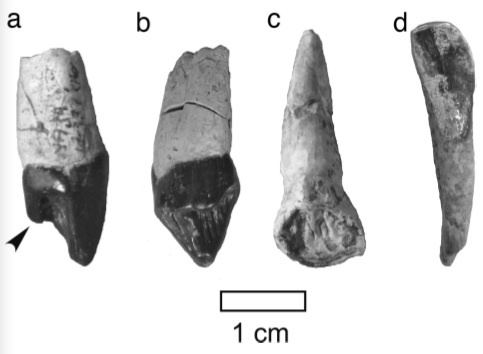 | ||
Genus NakalipithecusKunimatsu et al 2007. Similar | ||
Nakalipithecus
Nakalipithecus nakayamai is a prehistoric great ape species that lived in today's Kenya region early in the Late Miocene, 10 million years ago (mya). It is the type species of the new genus Nakalipithecus. This ape was described from a fossil jawbone and eleven isolated teeth excavated in 2005 by a team of Japanese and Kenyan researchers in mud flow deposits in the Nakali region of northern Kenya's Rift Valley Province, giving the genus its scientific name which means "Nakali ape". Fossil remains of several other primate species were also present at the dig site.

The fossil teeth were covered in thick enamel, suggesting that the diet of this hominoid included a considerable amount of hard objects, possibly nuts or seeds. According to Kyoto University researchers, the Nakalipithecus species is very close to the last common ancestor of gorillas, chimpanzees, and humans. It can therefore be considered a basal member of the Homininae, before they split up into the three lineages alive today. Nakalipithecus also resembles the genus Ouranopithecus, another prehistoric hominid species found in present-day Greece.
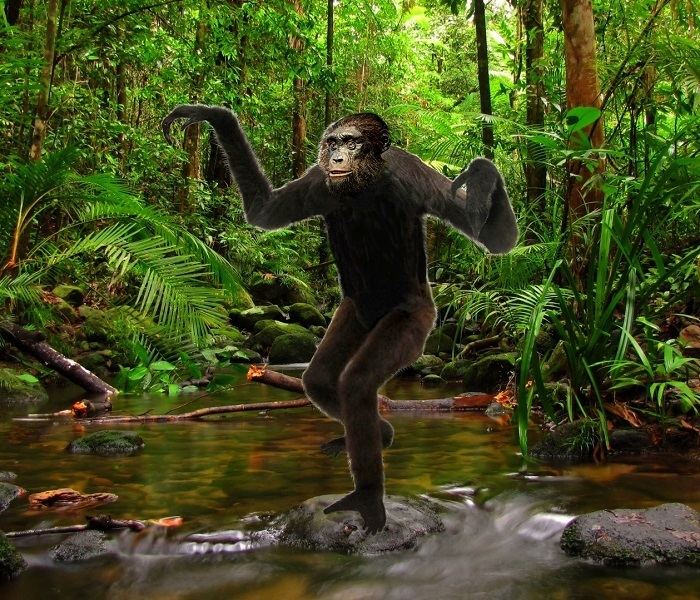
The evolutionary importance of Nakalipithecus is twofold: first, together with Ouranopithecus it provides evidence that the Homininae lineages of today diverged no earlier than some 8 million years ago. Second, it supports the theory that the closest relatives of humans evolved in Africa. The competing view—that modern-type Great Apes went extinct in Africa and that the Homininae were originally an Asian lineage which only later recolonized Africa—is hard to reconcile with the early Late Miocene presence of a basal hominine in Africa.
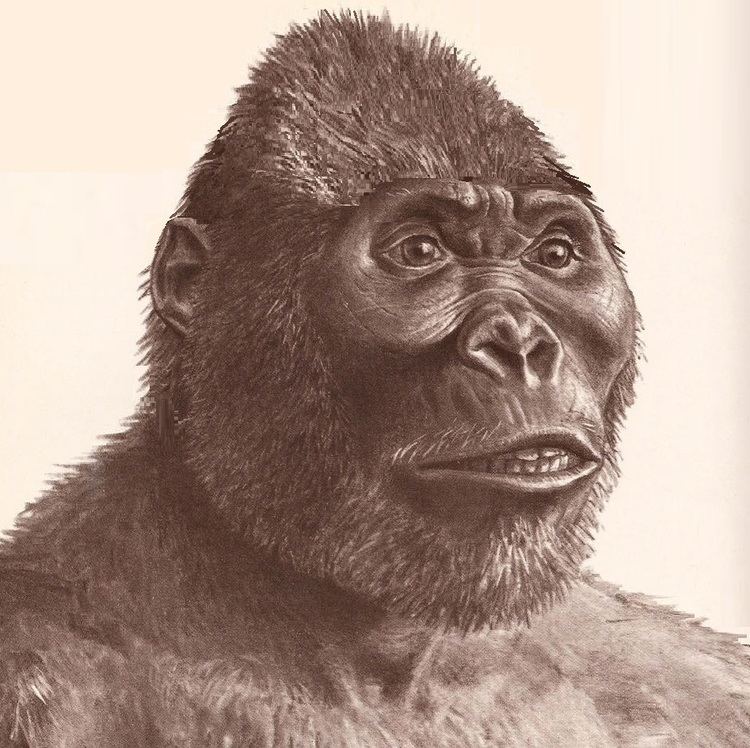
The name of the genus refers to Nakali, the region where the fossil was found, while the species is named after Japanese geologist Katsuhiro Nakayama who died while working on the project.
